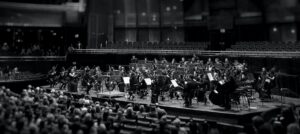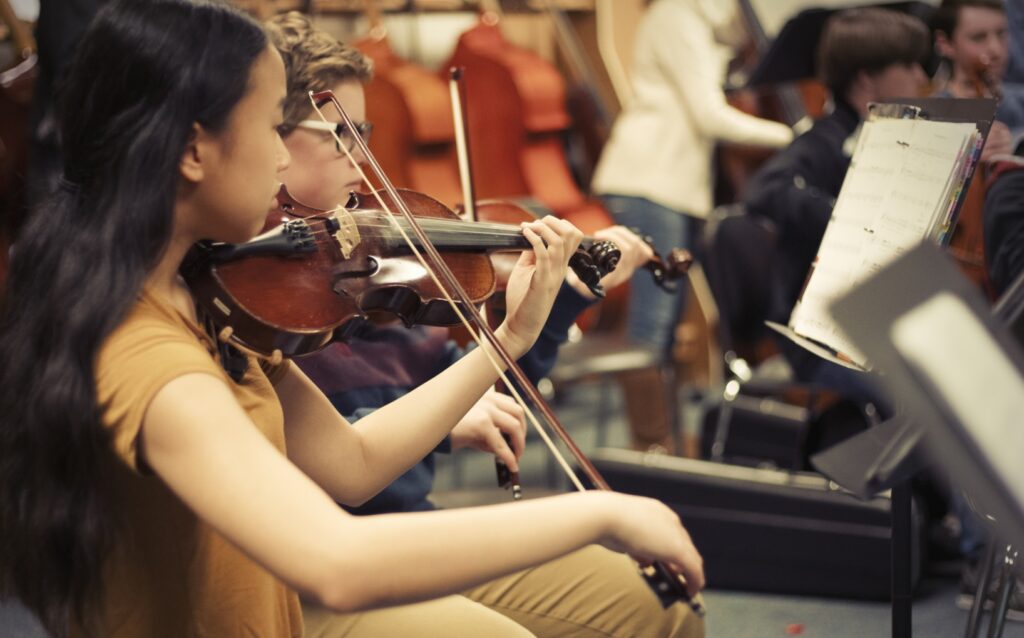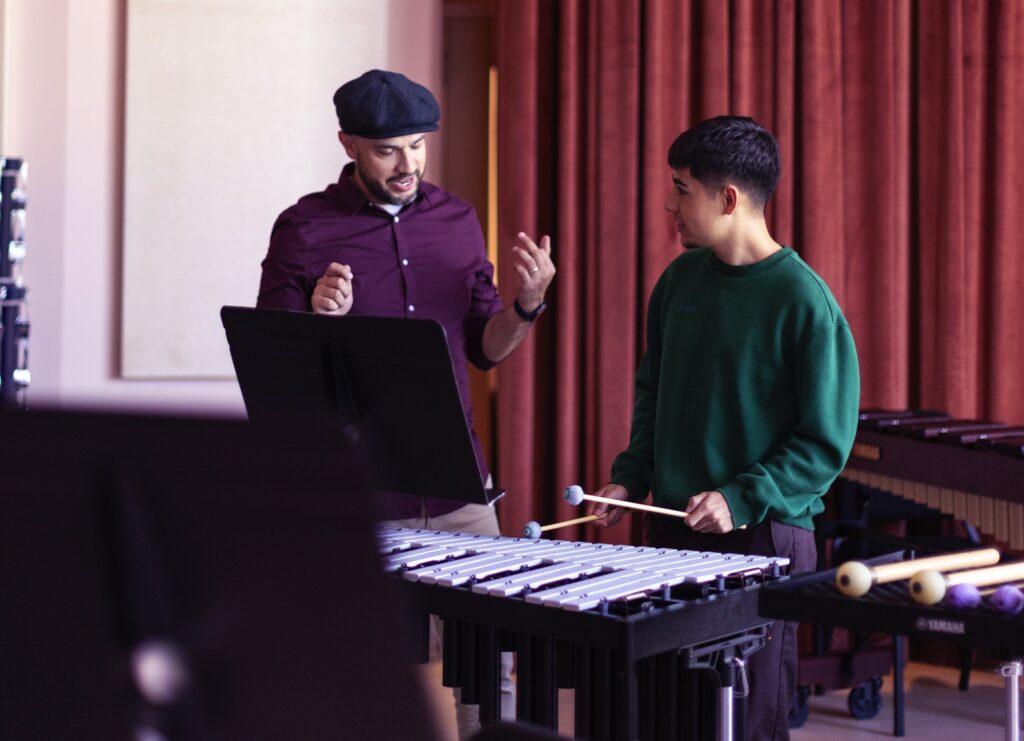5 Ways to Beat Writer’s Block
It’s exciting to teach composition, but what do you do when your students hit a creative roadblock?
Music students and music teachers alike suffer from writer’s block every now and then. Some days, it’s harder to keep that creative spark alive in the classroom.
Many of the things that foster my own creativity have helped my students as well. Kids are artists, too, and not as different from us as you might think! Here are a handful of tips to help un-stick writer’s block — no matter the student’s grade level or age.

1. Lower the Stakes
Some people say that the hardest part of composing is getting started. It’s daunting to open a blank document or DAW hub and penning or punching in the first few notes. While I partially agree with this, I think that high stakes are the biggest reason that dampens creativity.
High stakes can mean several things. When I compose or arrange, the project takes longer or never gets done if I have too many parameters. Starting with a 20+ instrument orchestral score or an overly flowery description of a piece as “inspiration” is a recipe for disaster. On the other hand, basic string quartets can be embellished and expanded into a symphonic piece with ease.
How can you lower the stakes? I reduce everything down to a lead sheet and chord symbols. I have found that when there’s a lack of rules, real magic happens. This works for our students, too.
The next time you give a composing assignment, stick to one or two parameters. “Come up with a song for a spooky movie” or “Use sol and do in a passage.”
Or, have students improvise over a basic drone and later sit down to write on the staff paper — this will have the same effect. Playing an instrument over just one note lowers the stakes.

2. Try a Different Instrument
Writing on or for the same instrument over and over again can feel redundant. So, if your class is always playing on hand percussion and xylophones, break out your classroom set of ukuleles.
Writing on different instruments feels different and will inspire different musical pieces. For example, when I play the cello, my writing often results in a legato, melancholy piece. But when I compose for guitar, the music tends to be more poppy. Students have a different relationship with each instrument they come across, just like you do.
Try bringing in and demonstrating an exotic instrument and have your students write a melodic line for you to play on it. You’ll be surprised with what they come up with. Some instruments that I have brought into the classroom include piccolo, djembe (a West African drum) and hammer dulcimers.

3. New Listening Exercises and Prompts
If your students aren’t relating to Vivaldi, supplement your listening exercises with something more modern. For example, have students listen to modern songs, and then prompt them to write a melody for that artist to sing. “Write a melody for Post Malone or Taylor Swift.” Make sure you select a clean and appropriate playlist for reference, of course.
Listening to music of all eras is important, but realize that if your classroom is in a creative rut, a pop-rap composition lesson might garner more excitement than saying, “Write an alternate motif for ‘Winter.’”
I remember teaching in the middle of February and struggling to keep the attention of a 1st-grade class. I decided to try an out-of-the-box idea — a Valentine’s Day-themed lesson where students would write poems on paper hearts, and then rap them to one another. I chose a basic copyright-free instrumental backtrack with a groovy feel. This was one of the students’ favorite lessons all year. For the rest of the school year, they asked to do the Valentine’s rap game. Little did they know that the lesson was a composition in disguise.

4. Move!
With an administrator’s permission, take your students outside for a walk before a composing lesson. A walk may sound like the opposite of doing music, but we all need to clear our minds before focusing. Students don’t get the chance to get up and about as often as they should. In middle school and high school, they have stricter schedules with even less opportunity to get out and move.
A Stanford study showed that people were 60% more creative while moving and that creativity remained for a while even when the exercise had concluded. For me, composing is best done after a stroll or getting that cup of coffee.
Before anything creative can happen, you must meet your own and your student’s basic needs (see Maslow’s hierarchy of needs theory). Your students won’t be as creative if they have unmet basic needs. If they are thirsty, hungry, anxious, or need to move, address these issues first. Keep emergency snacks and drinks on hand, and maintain a safe and comfortable spot in your classroom — these are essential for students of all ages.

5. Try a New Experience First
A new experience can be a lot of things — a trip to the symphony or art museum, a group drum circle, or a slam poetry/music collaboration project. Mixing up your routine — anything you wouldn’t normally do in your classroom — is creative fuel for young minds.
One other thing that fosters creativity at many age levels is improvisation. If you teach a group of older musicians, have students comp (improvise) over a tune as the rest of the band vamps (plays a basic section). Record this exercise and have students transcribe what they wrote on the fly.















